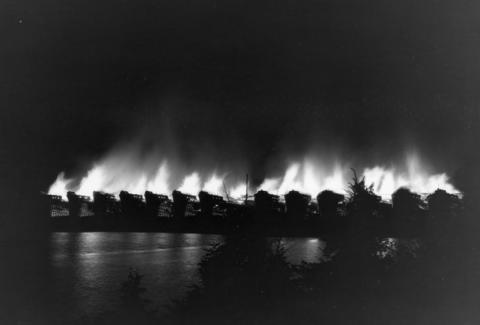Identity elements
Reference code
Name and location of repository
Level of description
Item
Title
BOWEN G49.1-007
Date(s)
- 1926-06-11 (Creation)
Extent
Name of creator
Content and structure elements
Scope and content
Shortly after midnight on June 11, 1926, the one and a half million dollar bonfire of World War I era warships was at its height. During WWI Seaborn Shipbuilding Co., Wright Shipbuilding Co. and Tacoma Ship Building Co. on the Tacoma tideflats had a contract to build 20 3,000-ton five-mast auxiliary schooners for France. When the war ended in 1918 thirteen partially completed ships still rested in the ways of the shipyard. Unfinished, they were towed to Seattle and moored in Lake Union until years later when they were sold for salvage. They were towed to the mouth of Minter Creek which feeds into Henderson Bay and set on fire. From midnight to dawn, a red glow from the fires lit up Tacoma's northwestern sky. When the fire had burned itself out, iron and other metals were collected from the ruins. (TNT 6/11/1926, pg. 1) TPL-126 Information provided by patron: The first few wrecks were burnt at Richmond Beach starting sometime after 1923, some wreckers including Nieman & Marcus continued working there up until the 1930s, while the one in Minter River was used at least twice, 13 ships were burnt in Jun 1926 and 5 ships were burnt in Aug. 1927. As late as 1930, residents complainined about the burning at Henderson Bay, preferring them to revert to Richmond Beach. I believe that the author of the Victoria Daily Times clipping (Victoria Colonist, Victoria B.C. 5/31/1926 p.8) with the ships names has gotten the location wrong, but they all are named as being laid up at Lake Union in 1921. Articles mentioned can be found in the clipping file TACOMA - INDUSTRIES - SHIPBUILDING

